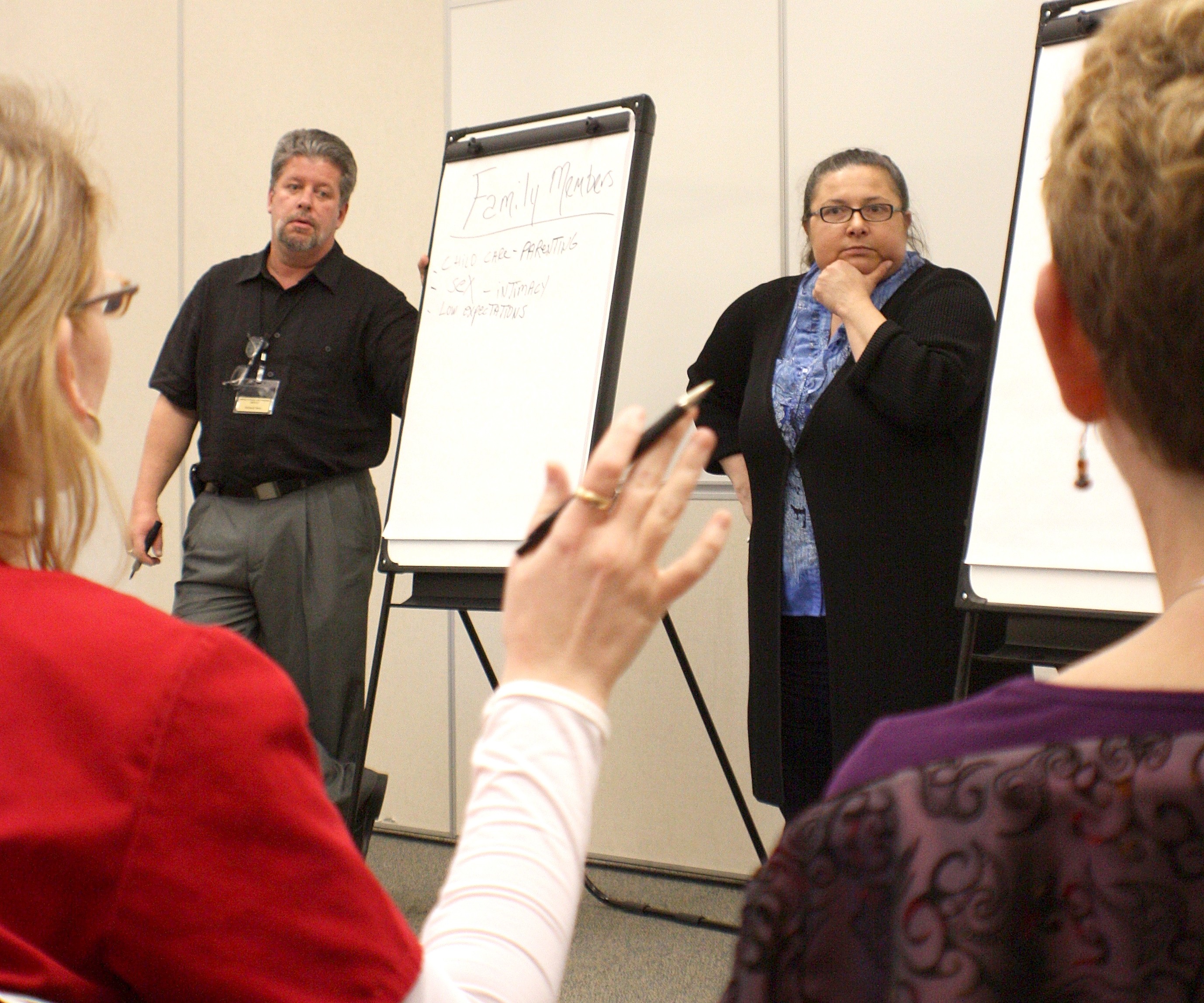JOINT BASE LEWIS-MCCHORD, Wash. - With joyous reunions their focal images, ceremonies for military units coming home from combat zones appear from the outside to be simple to organize and execute.
What could be easier than calling families to greet their Soldiers - then getting out of the way'
Though the operations and deployment pace of units assigned to Joint Base Lewis-McChord gives units plenty of practice, reunions and reintegrations require time, care and effort. Teams representing five more brigades are at work across the installation, communicating downrange, coordinating with a host of support agencies, and meeting with family readiness groups to keep families abreast of current news and future plans. All five should be back on the installation by the end of October.
Next in the barrel, the Stryker Soldiers of 5th Brigade, 2nd Infantry Division, are scheduled to come home from Afghanistan in stages throughout June. Their rear detachment is working hard to prepare the way home for its heroes.
About 85 brigade family members met April 28 in the 1st Battalion, 17th Infantry Regiment classroom to hear early details of the return, as well as learn about the support system available to them and their Soldiers. It was the first of eight identical sessions, numerous to make the information accessible to the broadest audience with the busiest schedules. Break-out sessions addressed a range of issues, from financial to behavioral, after the chain of command briefed the particulars of their Soldiers' trip home.
"I'm so happy for you that your Soldiers are coming back," said 5th Bde., 2nd Inf. Div. Rear Detachment Commander, Maj. Elvis Coronado, but he cautioned family members to expect changes. The job in Afghanistan is not done.
"They're still doing combat operations," he said of their Destroyer Brigade Soldiers. "They're still in the fight."
The return is only the first step, Coronado told spouses. Reintegrating Soldiers into their garrison lives and family routines will take time and vigilance. It's a process, he said, that changes their reality from sometimes violent to often mundane, even boring.
The path from combat to a new "normal" can be rocky, he said. As a veteran of three deployments, the rear "D" commander speaks from experience.
"I know what it's like to be a Soldier on the other end," Coronado said. "My wife and I aren't immune to any of these problems. We've had these problems, talked about them and this is my experience ... Problems arise 60-90 days after (Soldiers) come back. That's a fact of life. Take this seriously."
Coronado said his guidance from Afghanistan is to focus on smoothing the impending transition for family members. To that end, he believes in leading from the front in conducting the sessions for family members, demonstrating that it's OK to ask for help. Either he or his executive officer, Capt. Paul Tanghe, will brief at each family session, field questions and personally encourage spouses and children to take advantage of resources.
"Listen to these people and take part in the discussions and avail (your) selves of help," Coronado said to the audience, "but it's up to (you) to seek the help."
Crucial members of the team are the brigade family readiness support assistant and her family-readiness-group counterparts in the battalions, companies and batteries. In 5th Bde., 2nd Inf. Div., Lindsey Tippery and her team serve as conduits for issues between families and chains of command. The FRSAs administer surveys and compile results so that sessions like last week's meet the needs of family members.
Tippery attends all brigade in-progress reviews, where she keeps Coronado apprised of family concerns and receives the latest bulletins from the deployed brigade to pass along to those waiting at home. Together, they determine the topics and points of emphasis for family meetings.
"We've readily used Ms. Tippery as a member of our staff and she has frequent input that has helped out tremendously," Coronado said. "She, the other FRSAs and the FRG leaders have been the backbone of the conferences."
Planning for the 5th Bde., 2nd Inf. Div. conferences was nearly complete before the installation's "Module 0" program for a more centralized reintegration architecture rolled out, though Tippery said she incorporated its concepts into the brigade's program. Under the new system, chaplains will alleviate some of the FRSAs' substantial burden to coordinate among support agencies for reintegration meetings. So the current round of brigade family sessions forms a kind of bridge to the Mod 0 concept.
Chaplain Roy Myers, I Corps plans and training chaplain responsible for Mod 0, emphasized the unified effort required in the reintegration process.
"MOD 0 is a team effort, which has involved tremendous support from many agencies, including units and rear detachments," Myers said.
The Army's Deployment Cycle Support requirements dictate 35 percent of JBLM reintegration activities, leaving 65 percent to be determined by the needs of the rear detachments, with input from FRSAs and FRG leaders.
"The I Corps Chaplain's office is proud to support the rear detachments as they fulfill their role in taking care of Soldiers and their families," Myers said. "Unit representatives continue to provide leadership, support for the FRGs, ... (and) ensure the training is effective and meaningful as possible."
Tippery said she had received positive comments about last week's 5th Bde., 2nd Inf. Div. meeting,
"All the feedback we received was good," Tippery said. "People felt empowered, understood and equipped to prepare themselves for the return of their Soldier. This, of course, was just the response we were hoping for."
Don Kramer is a reporter with Joint Base Lewis-McChord's weekly newspaper, the Northwest Guardian.


Social Sharing